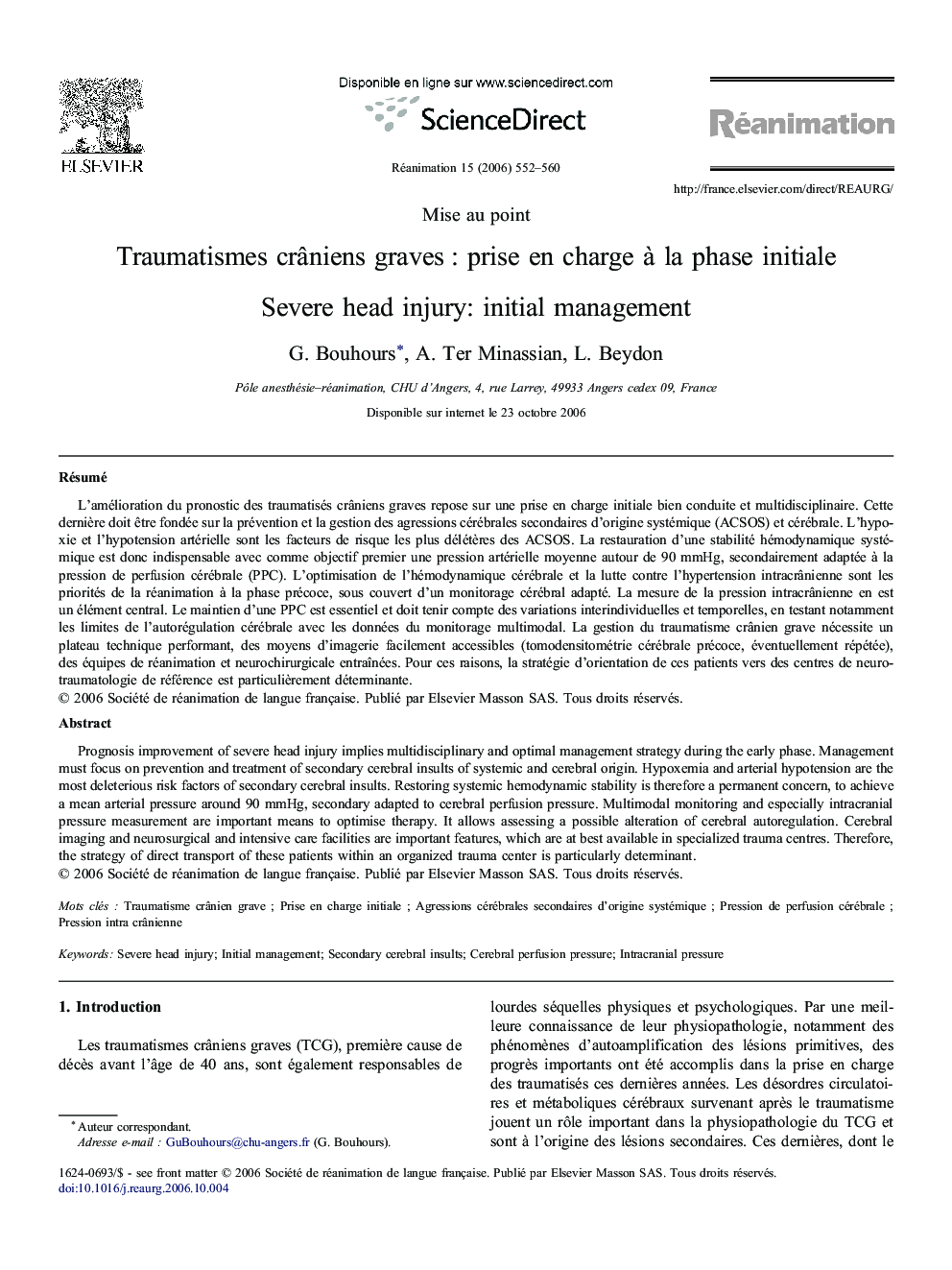| Article ID | Journal | Published Year | Pages | File Type |
|---|---|---|---|---|
| 2613420 | Réanimation | 2006 | 9 Pages |
Abstract
Prognosis improvement of severe head injury implies multidisciplinary and optimal management strategy during the early phase. Management must focus on prevention and treatment of secondary cerebral insults of systemic and cerebral origin. Hypoxemia and arterial hypotension are the most deleterious risk factors of secondary cerebral insults. Restoring systemic hemodynamic stability is therefore a permanent concern, to achieve a mean arterial pressure around 90Â mmHg, secondary adapted to cerebral perfusion pressure. Multimodal monitoring and especially intracranial pressure measurement are important means to optimise therapy. It allows assessing a possible alteration of cerebral autoregulation. Cerebral imaging and neurosurgical and intensive care facilities are important features, which are at best available in specialized trauma centres. Therefore, the strategy of direct transport of these patients within an organized trauma center is particularly determinant.
Keywords
Related Topics
Health Sciences
Medicine and Dentistry
Emergency Medicine
Authors
G. Bouhours, A. Ter Minassian, L. Beydon,
